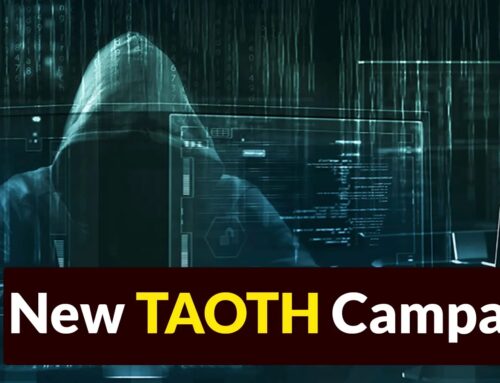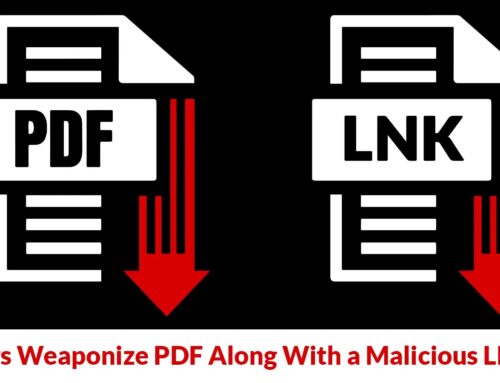
New Active Directory Lateral Movement Techniques that Bypasses Authentication and Exfiltrate Data
The landscape of enterprise cybersecurity has been irrevocably altered by the widespread adoption of hybrid cloud architectures. While offering unparalleled flexibility and scalability, the integration of on-premises Active Directory with Microsoft Entra ID (formerly Azure AD) introduces complex attack surfaces. Recent revelations, presented at Black Hat USA 2025, have unveiled sophisticated new lateral movement techniques that demonstrably bypass existing authentication mechanisms, leading to complete tenant compromise and data exfiltration. This significant development demands immediate attention from IT professionals, security analysts, and developers responsible for securing these critical environments.
The Evolving Threat: Authentication Bypass and Lateral Movement
For years, Active Directory has been the bedrock of identity and access management for countless organizations. Its hybridization with Microsoft Entra ID has brought forth new attack vectors that attackers are increasingly exploiting. The core of these newly discovered techniques lies in their ability to bypass traditional authentication protocols, allowing unauthorized access to vital Microsoft services like Exchange Online, SharePoint, and Microsoft Entra ID itself, without the need for compromised credentials in the conventional sense.
These methods represent a significant leap in attacker sophistication. Instead of relying solely on phishing or brute-force attacks to obtain initial access, these techniques leverage previously unknown vulnerabilities within Microsoft’s authentication infrastructure. This grants adversaries a direct path to internal resources, enabling them to move laterally within the network, escalate privileges, and ultimately exfiltrate sensitive data with alarming ease. The implications are profound, as traditional security controls designed to prevent unauthorized access at the perimeter may prove ineffective against such internal bypasses.
Black Hat USA 2025: Unveiling Critical Vulnerabilities
The cyber security community received a powerful wake-up call at Black Hat USA 2025, where researchers demonstrated these advanced lateral movement techniques. While specific CVE numbers for these newly disclosed vulnerabilities are still pending official assignment at the time of this writing, their existence underscores a critical gap in current defense strategies. The presentation highlighted how attackers could achieve complete tenant compromise, impacting an organization’s entire digital footprint and data integrity across hybrid Active Directory and Microsoft Entra ID environments.
The ability to gain unauthorized access to core services like Exchange Online and SharePoint is particularly alarming. Exchange Online often contains a wealth of sensitive corporate communications, while SharePoint hosts critical business documentation. Coupled with access to Microsoft Entra ID, attackers gain the ability to manipulate user accounts, alter permissions, and create backdoors, establishing persistent control over the compromised environment.
Remediation Actions: Fortifying Your Hybrid Active Directory
Given the severity of these newly revealed attack vectors, immediate and proactive remediation is paramount. Organizations with hybrid Active Directory and Microsoft Entra ID deployments must implement a multi-layered defense strategy. While specific patches are yet to be released for the vulnerabilities disclosed at Black Hat USA 2025, several best practices and mitigation steps can significantly reduce your attack surface and improve resilience:
- Implement Stronger Authentication Practices: Prioritize and enforce Multi-Factor Authentication (MFA) for all users, especially administrators. Move beyond traditional passwords where possible, adopting passwordless solutions or FIDO2 security keys.
- Principle of Least Privilege: Regularly review and enforce the principle of least privilege across all user and service accounts. Limit administrative privileges to the bare minimum required for operations. Implement Just-In-Time (JIT) access for privileged accounts.
- Continuous Monitoring and Anomaly Detection: Deploy and rigorously monitor Security Information and Event Management (SIEM) systems and Extended Detection and Response (XDR) solutions. Focus on detecting anomalous login patterns, suspicious administrative activities, and unusual resource access within both Active Directory and Microsoft Entra ID.
- Regular Security Audits and Penetration Testing: Conduct frequent security audits and penetration tests specifically targeting hybrid Active Directory and Microsoft Entra ID configurations. Emphasize testing for lateral movement techniques and authentication bypasses.
- Patch Management: Maintain a rigorous patch management program. Apply security updates and patches from Microsoft and other vendors promptly. While specific patches for these new vulnerabilities are awaited, keeping all systems up-to-date is fundamental.
- Network Segmentation: Implement robust network segmentation to limit lateral movement potential. Isolate critical servers and applications from general user networks.
- Conditional Access Policies: Leverage Microsoft Entra ID Conditional Access policies to enforce granular access controls based on user, device, location, and application context.
- Cloud Security Posture Management (CSPM): Utilize CSPM tools to continuously assess and improve the security configurations of your Microsoft Entra ID environment.
Tools for Detection and Mitigation
While specific tools for detecting the *exact* newly disclosed vulnerabilities are still under development or reliant on future security updates, the following categories of tools are essential for monitoring and securing hybrid Active Directory environments against advanced threats:
| Tool Name | Purpose | Link |
|---|---|---|
| Microsoft Defender for Identity | Detects advanced multi-stage attacks, including lateral movement, by leveraging Active Directory signals. | Microsoft Learn |
| Microsoft Sentinel | Scalable, cloud-native SIEM and SOAR solution for intelligent security analytics across your enterprise. | Microsoft Learn |
| BloodHound | Maps attack paths in Active Directory environments, helping visualize privilege escalation and lateral movement. | BloodHound Docs |
| Idem Disclaimer | (Placeholder for future tools specifically targeting Entra ID lateral movement detections) | N/A |
| ADSecurity.org Tools | Collection of custom scripts & tools for AD security auditing & analysis (e.g., BloodHound, LDAP monitor). | ADSecurity.org |
| Qualys VMDR | Vulnerability Management, Detection, and Response – provides continuous asset discovery, vulnerability assessment, and threat prioritization. | Qualys |
Conclusion: A Call to Action for Hybrid Security
The sophisticated new lateral movement techniques unveiled at Black Hat USA 2025 represent a significant escalation in the threats facing hybrid Active Directory and Microsoft Entra ID environments. These methods bypass traditional authentication, enabling complete tenant compromise and data exfiltration. Organizations must recognize the immediacy of this threat and move beyond conventional security measures. Proactive defense, anchored in strong authentication, least privilege principles, continuous monitoring, and rigorous auditing, is no longer optional but essential. The security of your entire digital estate depends on understanding and mitigating these advanced attack vectors.





